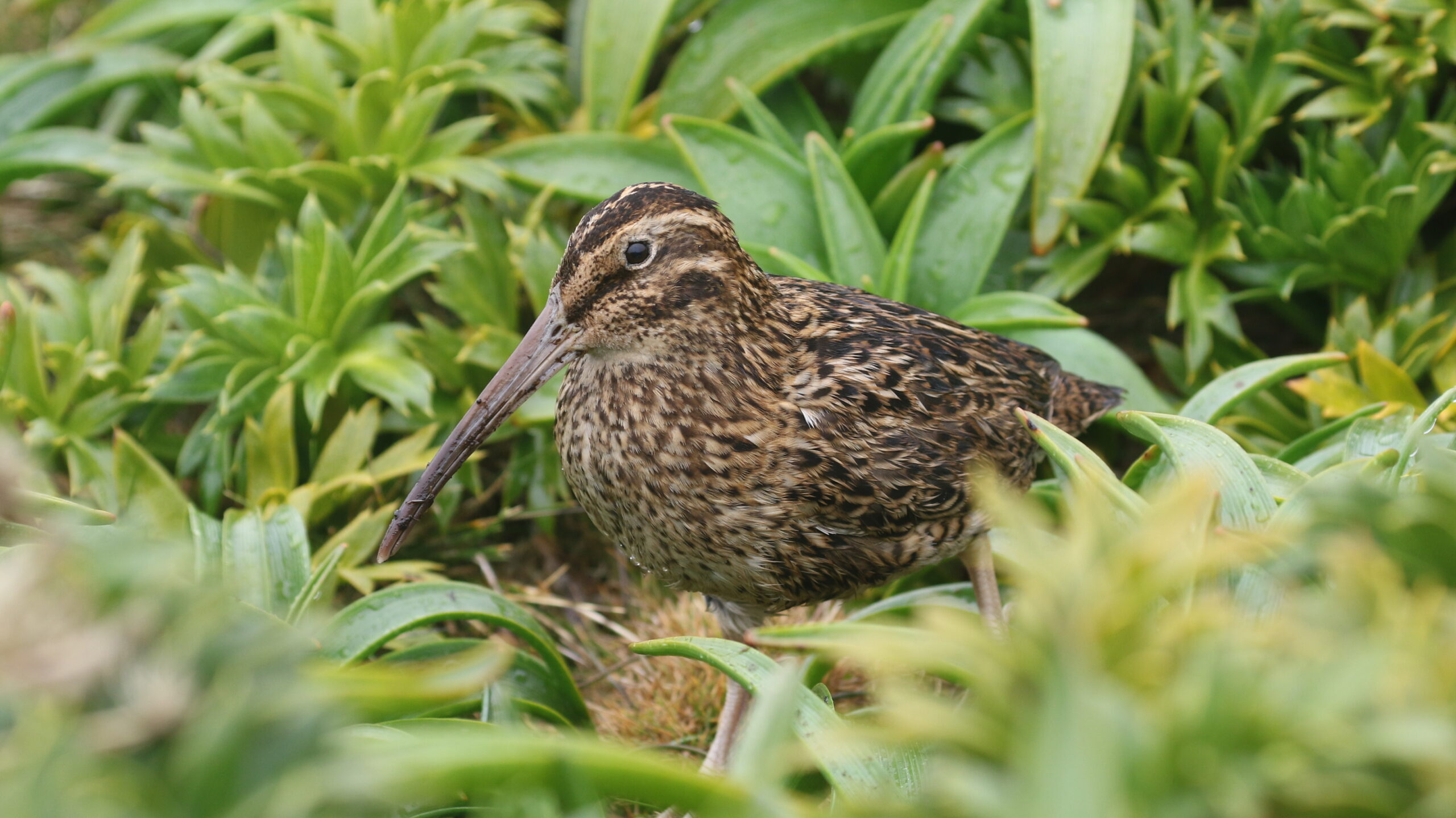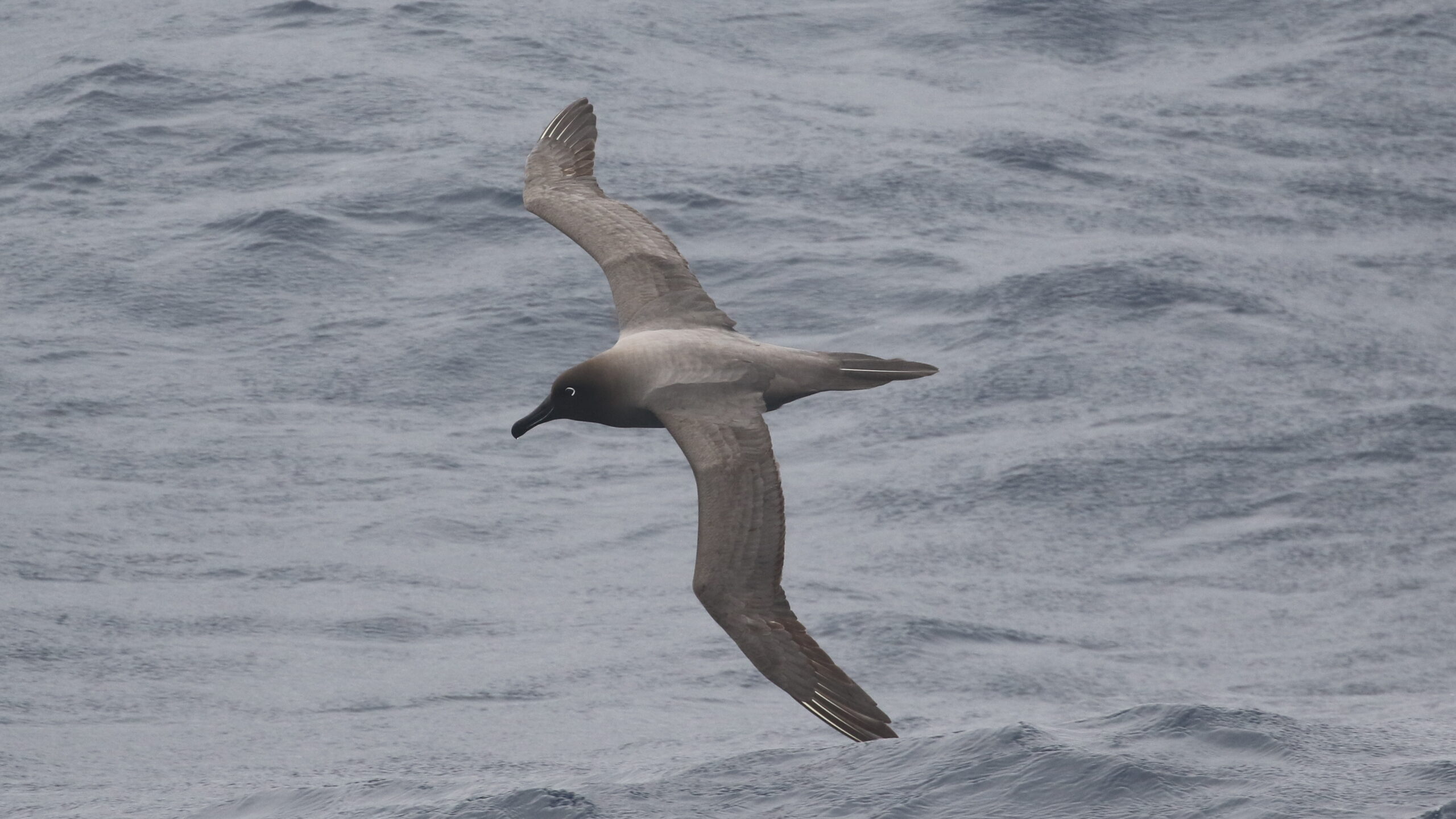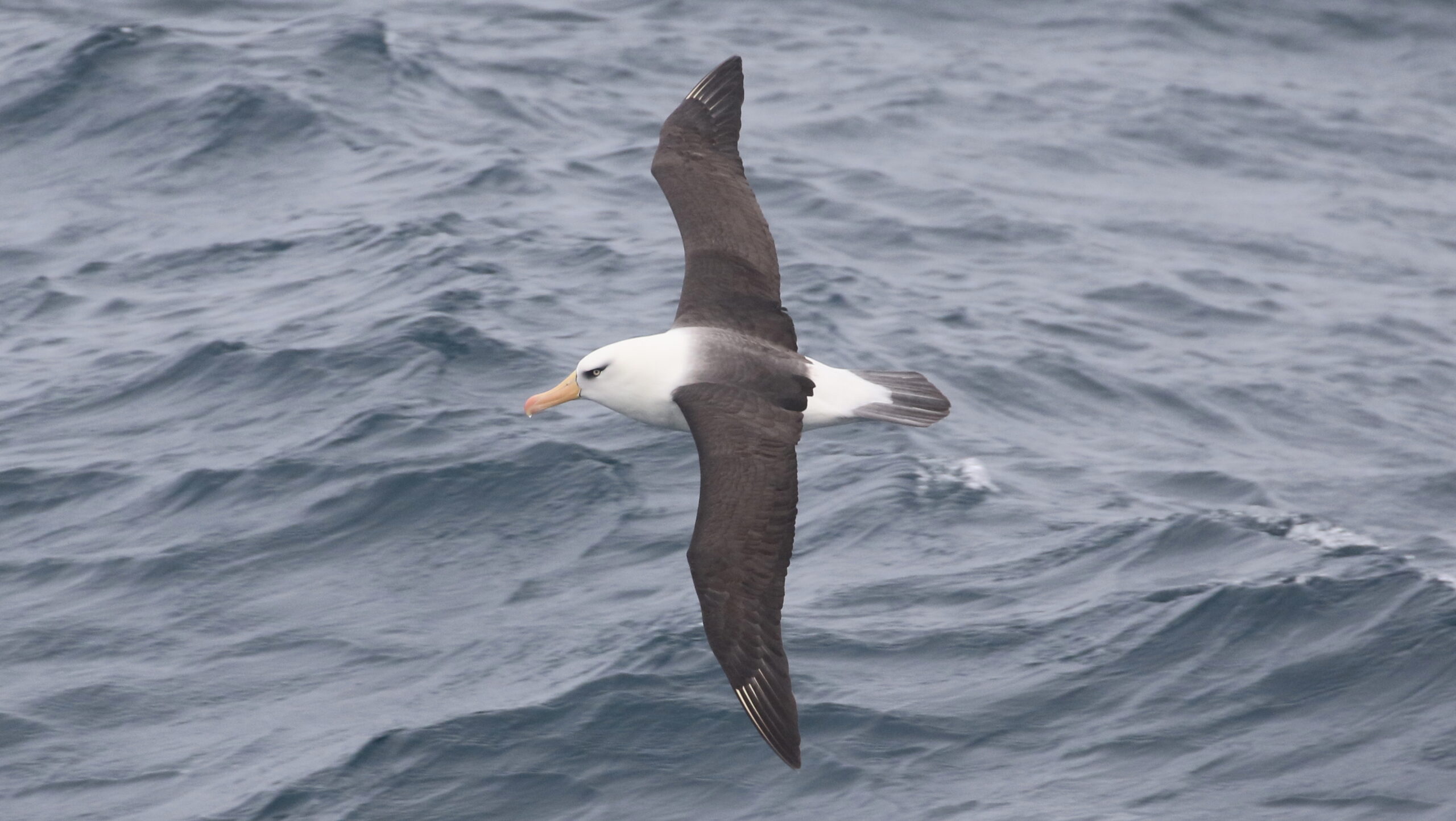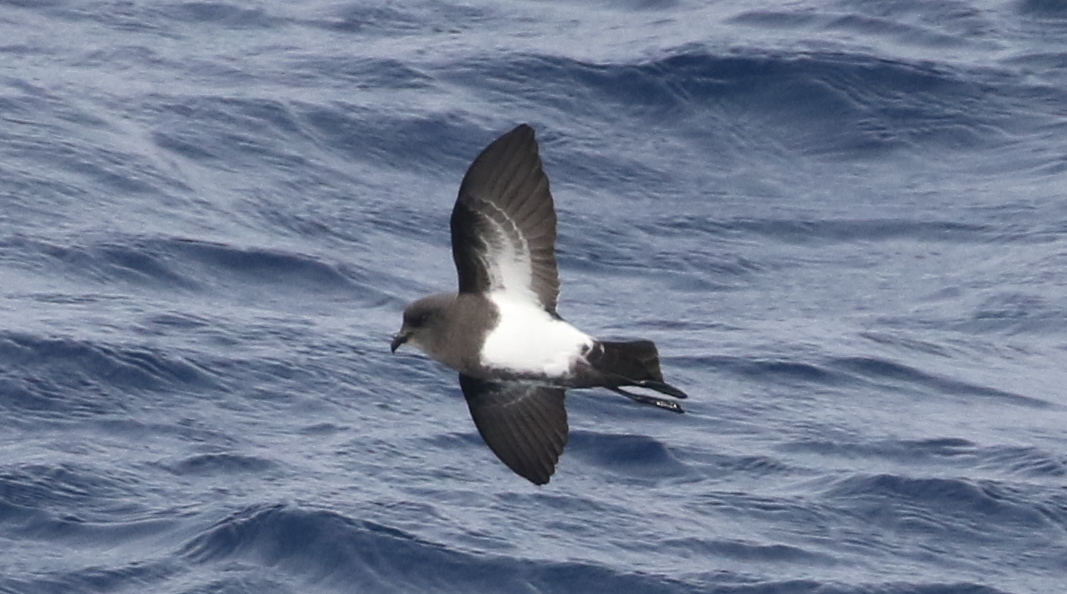New Zealand
Birding Down Under
An expedition cruise around the seabird-rich subantarctic islands of New Zealand and Australia
For the last 25+ years, WildWings has been offering the opportunity to join some extraordinary expedition voyages to the Subantarctic islands of New Zealand and Australia.
Although several different companies offer cruises to these islands, we firmly believe that those run by Heritage Expeditions give birders the best opportunities. Indeed, one of Heritage Expeditions’ premier trips is called Birding Down Under and this visits all the key islands south of New Zealand giving an unparalleled opportunity to see a spectacular range of penguins, albatrosses and other seabirds. For anyone who wants to see all the world’s penguins, this trip is more or less compulsory as there are excellent chances of three penguin species, Snares, Royal and Erect-crested which are found nowhere else in the world.
With Heritage Expeditions having permission to visit all the key islands, you can expect to go ashore on remote places such as Auckland Island, Macquarie Island and Campbell Island and see not only penguins but also breeding albatrosses and a host of landbird endemics. There are also excellent chances whilst at sea for an incredible range of seabirds including mega rarities such as the Magenta Petrel.
This truly is a trip like none other and one we thoroughly recommend.
Tour Dates & Prices
Tue 3rd December 2024
Thu 19th December 2024
- Phone Us to Book
Sat 6th December 2025
Mon 22nd December 2025
- Phone Us to Book
Tour Cost: 17 Days from £11695 * excluding flights
* The price and deposit quoted above is per person for the most basic cabin. Heritage Adventurer has a limited number of single cabins. Once these are all fully booked a single is only available at a 80% supplement. Please click on the 'trip info' tab for prices for all cabins types.
What's Included?
Pre/Post cruise transfers, one night hotel accommodation in a twin share room (including dinner/breakfast), all on board ship accommodation with meals and all expedition shore excursions.
Cost Excludes
International and domestic flights, all items of a personal nature including laundry, drinks, gratuities. visas and travel insurance.
Additional Information
The voyage will be accompanied by a WildWings/Limosa tour leader subject to a minimum number of bookings (please see “group size” above for the number required). If this total is not achieved, there are always expert bird guides employed by Heritage Expeditions aboard the vessel who are there to assist everyone.
The Tour Cost is the amount you will pay WildWings.
CABINS OPTIONS AND PRICES
Main Deck Triple: £11,695 including landing fees
Main Deck Triple Cabins on Deck 3 are a spacious 22m2 and feature two porthole windows, two single beds and one Pullman bed which folds down from the wall, comfortable lounge, writing desk, private en-suite with shower, ample storage and a flat screen entertainment system.
Superior Triple: £12,350 including landing fees
Superior Triple Cabins on Deck 5 are a spacious 22m2 and feature large panoramic windows, two single beds and one Pullman bed which folds down from the wall, comfortable lounge, writing desk, private en-suite with shower, ample storage and a flat screen entertainment system.
Deck 4 Superior: £13,500 including landing fees
Superior Cabins on Deck 4 are a spacious 22m2 and feature large panoramic windows, king or two single beds, comfortable lounge, writing desk, private en-suite with shower, ample storage and a flat screen entertainment system.
Deck 5 Superior: £13,945 including landing fees
Superior Cabins on Deck 5 are a spacious 22m2 and feature large panoramic windows, king or two single beds, comfortable lounge, writing desk, private en-suite with shower, ample storage and a flat screen entertainment system.
Main Deck Single: £16,125 including landing fees
Main Deck Single Cabins on Deck 3 are a spacious 22m2 and feature two porthole windows, king bed, comfortable lounge, writing desk, private en-suite with shower, ample storage and a flat screen entertainment system.
Worsley Suite: £16,400 including landing fees
Located on Deck 6, Worsley Suites are a spacious 22m2 and feature large panoramic windows, king or two single beds, comfortable chaise-style lounge suite, writing desk, private en-suite with shower, ample storage and a flat screen entertainment system.
Superior Single: £16,850 including landing fees
Superior Single Cabins on Deck 5 are a spacious 22m2 and feature large panoramic windows, king bed, comfortable lounge, writing desk, private en-suite with shower, ample storage and a flat screen entertainment system.
Heritage Suite: £25,500 including landing fees
Located on Deck 6, Heritage Suites are an expansive 44m2 and feature large double panoramic windows, king bed, large living area with a sofa, coffee table and chairs and grand marble bathroom with a double basin, bathtub and shower, large writing desk, floor to ceiling cabinetry for storage and a flat screen entertainment system.
Please note that for all expedition cruises, WildWings is acting as agent for the ship operator and you will need to sign up to their terms and conditions.
Tour Cost: 17 Days from £11695 * excluding flights
* The price and deposit quoted above is per person for the most basic cabin. Heritage Adventurer has a limited number of single cabins. Once these are all fully booked a single is only available at a 80% supplement. Please click on the 'trip info' tab for prices for all cabins types.
What's Included?
Pre/Post cruise transfers, one night hotel accommodation in a twin share room (including dinner/breakfast), all on board ship accommodation with meals and all expedition shore excursions.
Cost Excludes
International and domestic flights, all items of a personal nature including laundry, drinks, gratuities. visas and travel insurance.
Additional Information
The voyage will be accompanied by a WildWings/Limosa tour leader subject to a minimum number of bookings (please see “group size” above for the number required). If this total is not achieved, there are always expert bird guides employed by Heritage Expeditions aboard the vessel who are there to assist everyone.
The Tour Cost is the amount you will pay WildWings.
CABINS OPTIONS AND PRICES
Main Deck Triple: £11,695 including landing fees
Main Deck Triple Cabins on Deck 3 are a spacious 22m2 and feature two porthole windows, two single beds and one Pullman bed which folds down from the wall, comfortable lounge, writing desk, private en-suite with shower, ample storage and a flat screen entertainment system.
Superior Triple: £12,350 including landing fees
Superior Triple Cabins on Deck 5 are a spacious 22m2 and feature large panoramic windows, two single beds and one Pullman bed which folds down from the wall, comfortable lounge, writing desk, private en-suite with shower, ample storage and a flat screen entertainment system.
Deck 4 Superior: £13,500 including landing fees
Superior Cabins on Deck 4 are a spacious 22m2 and feature large panoramic windows, king or two single beds, comfortable lounge, writing desk, private en-suite with shower, ample storage and a flat screen entertainment system.
Deck 5 Superior: £13,945 including landing fees
Superior Cabins on Deck 5 are a spacious 22m2 and feature large panoramic windows, king or two single beds, comfortable lounge, writing desk, private en-suite with shower, ample storage and a flat screen entertainment system.
Main Deck Single: £16,125 including landing fees
Main Deck Single Cabins on Deck 3 are a spacious 22m2 and feature two porthole windows, king bed, comfortable lounge, writing desk, private en-suite with shower, ample storage and a flat screen entertainment system.
Worsley Suite: £14,045 including landing fees
Located on Deck 6, Worsley Suites are a spacious 22m2 and feature large panoramic windows, king or two single beds, comfortable chaise-style lounge suite, writing desk, private en-suite with shower, ample storage and a flat screen entertainment system.
Superior Single: £16,850 including landing fees
Superior Single Cabins on Deck 5 are a spacious 22m2 and feature large panoramic windows, king bed, comfortable lounge, writing desk, private en-suite with shower, ample storage and a flat screen entertainment system.
Heritage Suite: £20,540 including landing fees
Located on Deck 6, Heritage Suites are an expansive 44m2 and feature large double panoramic windows, king bed, large living area with a sofa, coffee table and chairs and grand marble bathroom with a double basin, bathtub and shower, large writing desk, floor to ceiling cabinetry for storage and a flat screen entertainment system.
Please note that for all expedition cruises, WildWings is acting as agent for the ship operator and you will need to sign up to their terms and conditions.
Tour Highlights
- visits to the extraordinary subantarctic islands south of New Zealand and Australia - Snares, Auckland, Macquarie, Campbell, Antipodes, Bounties and Chathams
- opportunities to see albatrosses displaying and on their nesting grounds
- an excellent chance of all three endemic species of penguins - Snares, Royal and Erect-crested, as well as King, Gentoo, Yellow-eyed, Little, Fiordland and Eastern Rockhopper
- 7+ species of endemic cormorants including the critically endangered Chatham Islands Cormorant
- an incredible range of other seabirds whilst at sea including a good chance of the critically endangered Magenta Petrel
- two endemic flightless ducks - Auckland Islands Teal and Campbell Island Teal
- a high chance of seeing two of the rarest waders in the world - Shore Plover and Chatham Oystercatcher
- aboard a comfortable expedition ship with expert crew
- accompanied by a WildWings/Limosa tour leader subject to minimum numbers
Outline Itinerary
-
Arrive in Queenstown, New Zealand and overnight in a downtown hotel.
-
Depart Queenstown and transfer to the small town of Bluff where we will board the Heritage Adventurer and sail
-
Zodiac cruise at the Snares Island
-
Landing on Enderby Island in the Auckland Islands
-
At sea
-
Macquarie Island
-
At sea
-
Campbell Island
-
At sea
-
Antipodes Islands
-
Bounty Islands
-
Pyramid Rock and South East Island, Chatham Islands
-
Waitangi, Chatham Islands
-
At sea
-
Disembark in Bluff, New Zealand

For birders and island enthusiasts, the ice-strengthened Heritage Adventurer offers several voyages between November and January to the rarely visited Subantarctic islands of New Zealand and Australia and the most comprehensive of these is ‘Birding Down Under’, which visits all the islands of interest to birdwatchers.
Over 40 species of tubenoses can be expected and during daylight hours, there will barely be a moment at sea without petrels, prions or albatrosses being present. The list of possibilities is staggering and includes a host of desirable species including three endemic penguins (Snares, Erect-crested and Royal), 7+ endemic cormorants, plus a host of albatrosses, petrels, prions and storm-petrels. Some of these, such as Magenta Petrel, are essentially unique to this expedition and this critically endangered species is now seen on almost every sailing.
Landings are made on many of the islands (as some are closed with only researchers allowed ashore) and this adds another dimension to the trip with some very special ‘land birds’ being found. On Auckland and Campbell Islands, for example, there are excellent chances of the flightless teal different species on both islands) and Subantarctic Snipe. Several species of endemic parrots are also possible including the highly range restricted Antipodes Parakeet, whilst at the Chatham Islands, there are good chances of Shore Plover, Chatham Oystercatcher, Chatham Pigeon, Chatham Parakeet and Chatham Gerygone.
It is, however, the seabirds which are the main attraction for many people who join this trip and the list of albatrosses could include Snowy, Antipodean, Gibson’s, Southern Royal, Northern Royal, Light-mantled Sooty, Black-browed, Campbell, White-capped, Chatham, Salvin’s, Grey-headed and Buller’s and with King, Gentoo, Yellow-eyed, Eastern Rockhopper and Fiordland to add to the endemic penguins, it truly is an amazing experience.


Day 1: Queenstown, South Island, New Zealand
Arrive in Queenstown, New Zealand and overnight in a downtown hotel.
Day 2: Depart on the Heritage Adventurer
Transfer to the small town of Bluff where we will board the Heritage Adventurer. As soon as the ship leaves the shelter of the wharf, there will be opportunities to find our first seabirds including the highly localised Foveaux Shag.
Day 3: The Snares
The Snares is the first of the Subantarctic islands on our itinerary and although only three miles long, this is an amazing place with more nesting seabirds than around the entire British coastline! We should arrive in the early morning and, if conditions are suitable, will zodiac cruise the sheltered bays on the eastern side, where we hope to find the endemic Snares Penguin, Tomtit and Fernbird. The endemic snipe is only rarely seen but we should get good views of the other specialities.
As we depart, there are likely to be Snares Penguins around the ship and as we get further out to sea, there will be a range of albatrosses which could include Campbell, White-capped and Salvin’s.
Day 4: Enderby Island, Auckland Islands
We plan to land at the appropriately named Sandy Bay on Enderby Island which is a four kilometre long island off the northeast of the main Auckland Island. The beach is a breeding ground for Hooker’s Sea-lions and there are likely to be plenty of animals ashore and in the shallows with endemic Auckland Islands Shags watching us from the top of the cliffs.
There are usually a couple of options offered with a longer, more energetic, walk for those who are looking to see more of the island, whereas many of the birders tend to stay local and focus on finding the specialities in the environs of Sandy Bay.
There is plenty of amazing wildlife and we can follow a boardwalk which transects the island where there are excellent chances of finding displaying Southern Royal Albatrosses which nest here and are sometimes only a matter of metres from the path. This is also our first opportunity to find the elusive Subantarctic Snipe and in the small pools not far from our landing site, we should be able to find the Auckland Island Flightless Teal and watch Yellow-eyed Penguins as they transit between their breeding burrows and the beach.
Day 5: At sea
Although we will be at sea all day, this will be a fantastic opportunity to see many pelagic seabirds which could include an amazing selection of albatrosses with Snowy, Gibson’s and Antipodean Wandering, as well as White-capped, Light-mantled Sooty, Grey-headed, Black-browed and Campbell all possible.
We should also see White-chinned, Mottled, White-headed and Cape Petrels, Grey-backed and Black-bellied Storm Petrels, as well as prions and diving-petrels.
Days 6-7: Macquarie Island
We have two days scheduled at Macquarie Island which is the only place in the world where the endemic Royal Penguin breeds and if conditions are suitable, we will land at a beach adjacent to a large colony. King Penguins are also found here in big numbers and we should also find Gentoo and Eastern Rockhopper Penguins as well as the endemic Macquarie Shag.
We are likely to find Southern Elephant Seals on the beaches and whilst the males do occasionally duel for control and to decide who is ‘Beach Master’, more often they spend their time quietly sleeping as they rebuild their energy for the next fight.
Day 8: At sea
As we travel towards Campbell Island, we can expect to see a similar range of species to those we saw on our way to Macquarie Island, however, there is always the possibility of something new with the chance of some different cetaceans including Hourglass and South Right Whale Dolphins.
Day 9: Campbell Island
The ship will anchor in an extremely protected natural harbour (Perseverance Harbour) so, irrespective of the sea conditions, we should be able to get ashore and as with all the islands on this itinerary, the wildlife is spectacular.
Close to our landing site, we are likely to find the endemic Campbell Island Flightless Teal and Campbell Island Shag and will then have the opportunity to follow a four kilometre long boardwalk which crosses the island. There are chances for Subantarctic Snipe and New Zealand Pipit as the path gradually climbs into the rugged hills and once we emerge above the treeline, we can expect to find nesting Southern Royal Albatrosses amongst a great array of colourful ‘mega herbs’.
Campbell Island is the main breeding location for this albatross and as well as seeing birds on their nests, we may also have the opportunity to watch younger individuals displaying in the late afternoon with their wings outstretched and bill clattering as they start to form lifelong pair bonds.
Day 10: At sea
This will be another opportunity to look for pelagic seabirds as the ship continues on towards the Antipodes Islands and as well as a great selection of albatrosses, we could find Subantarctic (Little) Shearwater, Soft-plumaged Petrel and Grey-backed Storm-petrel. This will also be an chance to sort out the extremely similar looking prions which could include Broad-billed, Fairy, Fulmar and Antarctic.
Day 11: Antipodes Islands
This is one of the most isolated and least known of New Zealand’s Subantarctic islands and we plan to zodiac cruise the coastline for the three special species which are found here, namely Erect-crested Penguin, Reischek’s Parakeet and Antipodes Parakeet, the latter two being endemic to the islands. We will also look for the distinctive form of New Zealand Pipit which occurs here and is also endemic.
With Antipodean Wandering Albatrosses nesting high above us, it should be a fantastic cruise before we return to the ship and continue our journey towards the Bounty Islands.
Day 12: Bounty Islands
Although not much more substantial than a series of large rocky outcrops, the Bounty Islands are home to another endemic, the Bounty Islands Shag, which is the most localised species in this family. With a total population of only a few hundred individuals, it is also one of rarest shags in the world.
Almost the entire global population of Salvin’s Albatross breeds on the Bounties and we are likely to see thousands of these riding the air currents over the islands.
If conditions are suitable, there should be an opportunity to zodiac cruise and this will allow us to also get closer to the Erect-crested Penguins, although all three species should be seen very well from the ship.
As we begin our transit northwards to the Chatham Islands, it will be important to spend as much of the daylight hours as possible scanning as we enter the zone with the best chances of seeing the Magenta Petrel or Taiko. This critically endangered bird is believed to have a world population of only 80-100 individuals and whilst it is thought to be slowly increasing, nevertheless, it is still one of the rarest birds on the planet.
Day 13: Pyramid Rock and South East Island, Chatham Islands
During the morning we will continue our journey towards the Chatham Islands and as we get closer, this is likely to be our best chance of finding Magenta Petrel, with a possibility of also seeing Chatham Petrel. The latter species generally arrives at the breeding grounds somewhat later than the Taikos but there is an outside possibility of finding this rarely seen bird.
Late in the morning, we should be close to Pyramid Rock which is very well named and the only breeding site in the world for the Chatham Albatross. There are several thousand pairs packed onto this small island and we can expect to get some great views.
We continue on towards South East Island where, depending on sea conditions, we hope to zodiac cruise off the island with one of our primary targets being the highly endangered Shore Plover which frequents the rocky tideline. The world population is believed to number no more than 220 individuals but we stand an excellent chance of finding it.
Day 14: Waitangi, Chatham Islands
We plan to land on the main inhabited island in Chatham archipelago and should find the endemic Chatham Oystercatcher on the beach close to our landing site. Travelling in local buses to an area of native forest, we will hope to find the endemic Pigeon and Gerygone along with other native New Zealand birds such as Tui.
Back at sea, we will need to be on the lookout for two other endemic and very rare species, Pitt Island and Chatham Islands Shags which are both possible before we reluctantly begin our journey back to mainland New Zealand..
Days 15-16: At sea
It is over 1,000 kilometres from the Chatham Islands to Inercargill and during our final two days of the expedition, we will pass over the Chatham Rise which can be excellent for both seabirds and cetaceans. We could potentially find some new species such as Westland Black Petrel or Cook’s Petrel but there will also be the possibility of some cetaceans with Gray’s Beaked Whale occasionally seen in these waters.
Day 17: Bluff, New Zealand
Our expedition will end after breakfast in Bluff and there will be a transfer to the city of Invercargill and the airport or for those wanting to extend their time in New Zealand, Limosa will happily provide advice on further options.
Please note: All itineraries are subject to weather, local conditions and final approval by the relevant authorities

THE SHIP
Heritage Expeditions have been running trips to these islands for over 25 years. For most of this period, these expeditions have operated on converted Russian research vessels, in particular the Spirit of Enderby (or to call it by it it’s Russian name Professor Khromov), however, as from mid-2022 Heritage Expeditions will instead be operating Heritage Adventurer. This purpose built expedition ship (which was previously known as Hanseatic and Resolute) combines the highest passenger ship ice-class rating (1A Super) with extremely comfortable cabins and passenger facilities.
Originally designed to accommodate 184 guests, Heritage Adventurer will carrry a maximum of 140 expeditioners ensuring spacious, stylish and comfortable voyages. There will be a fleet of 14 zodiacs to ensure all guests are able to maximise on their expedition adventure.

Tour Gallery
View a gallery of images for this tour below, click on an image to view as full size with caption




















































































Ask About This Tour
If you have any questions about this tour, please enter your details here and we will get back to you as soon as possible.
Alternatively, contact us by email or phone. We look forward to hearing from you!
- 0117 965 8333
- [email protected]
Or complete the contact form and we will endeavour to get back to you as soon as possible.
* = required field


